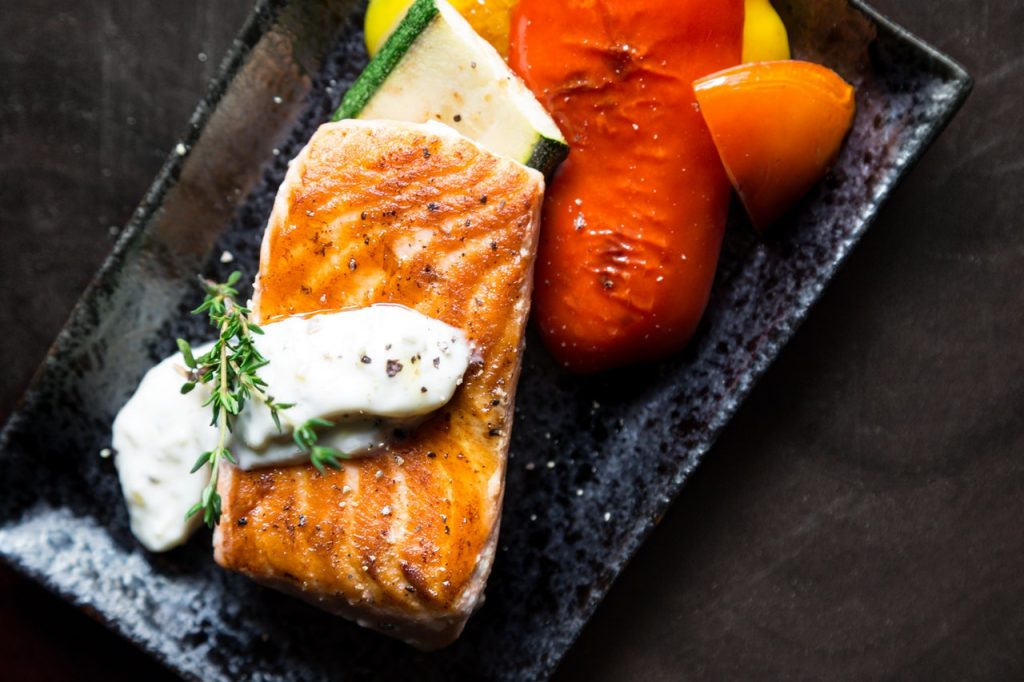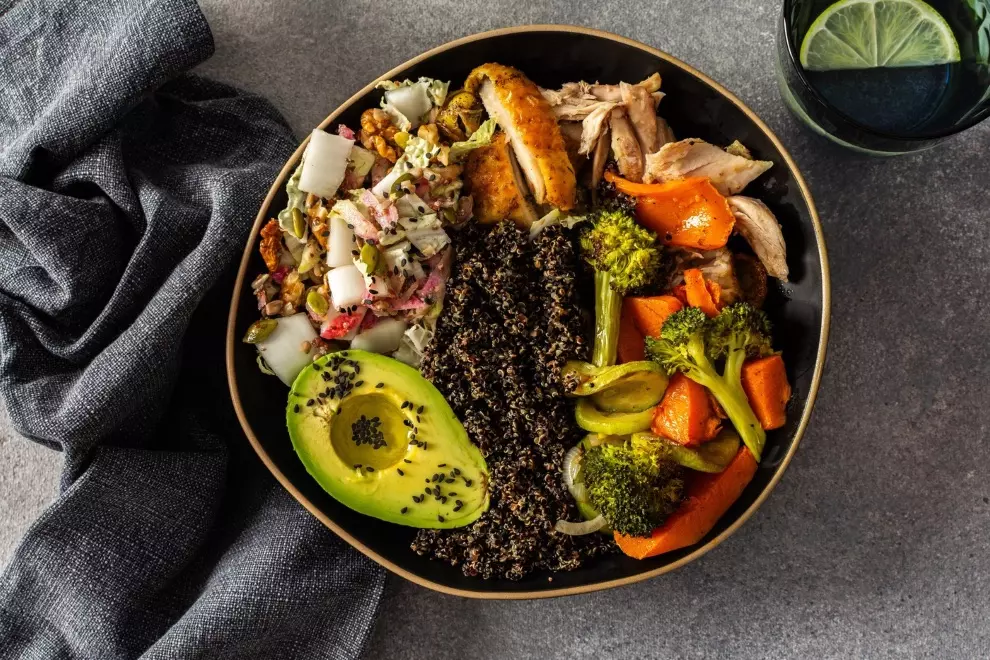Protein
The World Health Organization recommends getting a minimum of 0,8 g of protein per 1 kg of body weight. This amount is only enough to avoid diseases for a healthy adult leading a sedentary lifestyle. Most active people should get at least around 1,2 g. And this changes again as we get older because protein synthesis decreases with age. For malnourished or ill seniors, the ideal protein intake might be even above 1,5 g. For the average 70kg person, it would be more than 100 g of protein or four palm-sized servings of protein a day. This is how a day might look like:

- 3 eggs for breakfast (22 g of protein)
- 150 g grilled chicken breast for lunch (40 g of protein)
- 60 g mozzarella as a snack (10 g of protein)
- 1 can of sardines for dinner (26 g of protein)
Of course, you will get protein from sides such as potatoes, bread, rice, oats and so on but it’s better to have a little bit more rather than less. Protein is what allows you to keep muscle mass which is essential for active seniors. Eggs, fish, and meats are the most nutrient-dense sources of protein but including some dairy, legumes, nuts, and seeds is also a good idea. High-quality protein powder is an option too if you have a hard time getting enough protein. You can add it to smoothies, porridge, or pancakes, for example. Also, if you have problems with your kidneys, you should consult the protein intake with your doctor.
Carbohydrates

Carbohydrates are a source of energy and fibre that helps with digestion. The problem is a lot of foods today are full of the simple carbohydrate best known as sugar, which can be unhealthy and promote overeating. The best thing to do is to aim for sources of complex carbs that are rich in fibre and contain as little simple sugar as possible.
The quantity of carbs depends on your activity levels but always try to get at least 25 g of fibre every day. Well-cooked legumes such as beans or lentils, tubers like potatoes or cassava, any whole grains, root vegetables, and fresh fruits and veggies will all help you achieve that.
Fats

Fats are a source of energy for your body but they also play an important role in inflammation regulation, which is particularly of interest to seniors as inflammation is at the root of many chronic diseases. These are some fat sources that will help you avoid a pro-inflammatory diet.
- Fatty fish like sardines, salmon or tuna, and most seafood
- Avocados
- Small amounts of nuts and seeds (flax, hemp, chia, and walnuts are best)
- Pasture-raised eggs
- Grass-fed beef or lamb
- Occasional cold-pressed or virgin oils such as olive oil
- Limit the following sources of fat as they promote inflammation.
- Trans fats (mostly found in pastries and packaged sweets)
- Highly refined seed oils like canola, soybean, corn (mostly found in fried fast food)
The quantity of fats, just like carbs, again depends on your activity levels and body composition. Overall, try to base the majority of your diet on wholesome base ingredients mentioned in this article and you will do better than most. As long as you have three good real-food meals a day, the occasional birthday cake and a sweet treat with a coffee won’t be a big issue.








